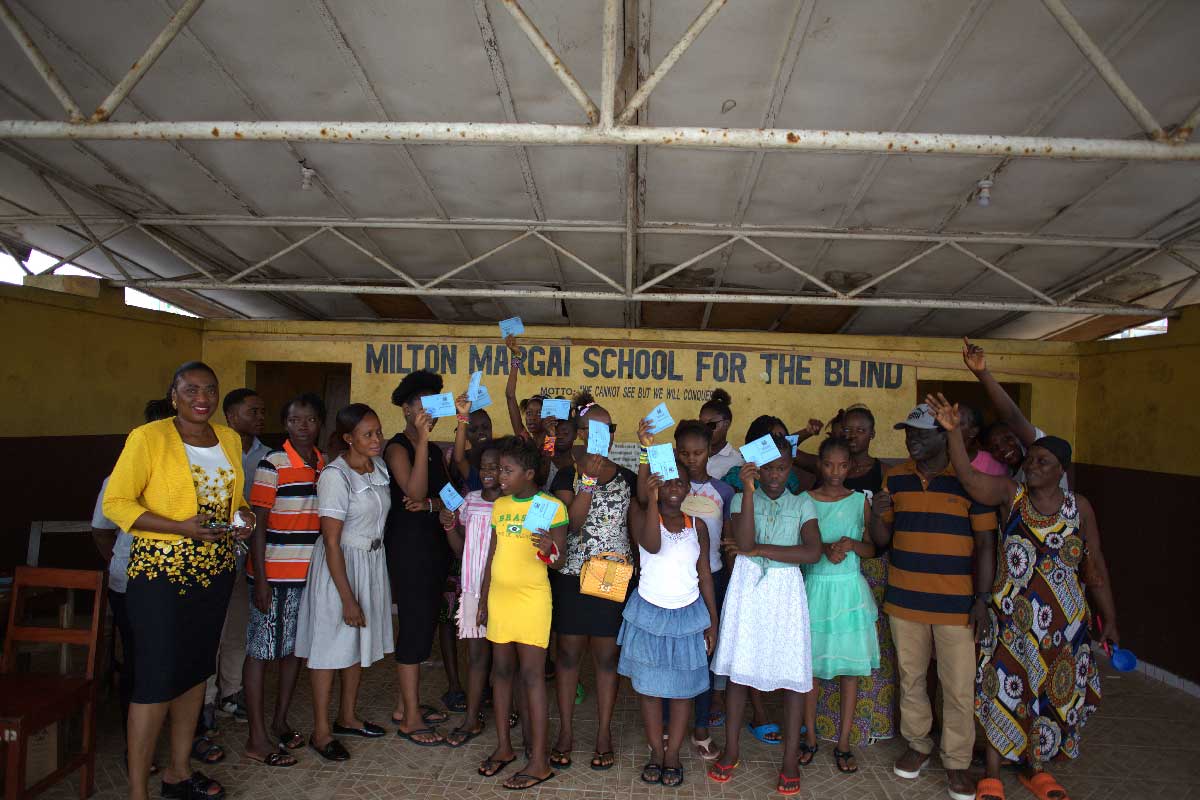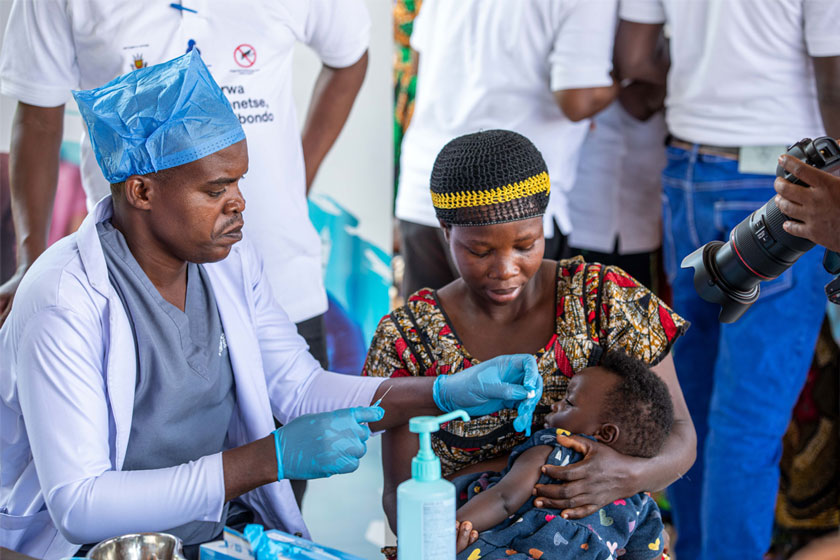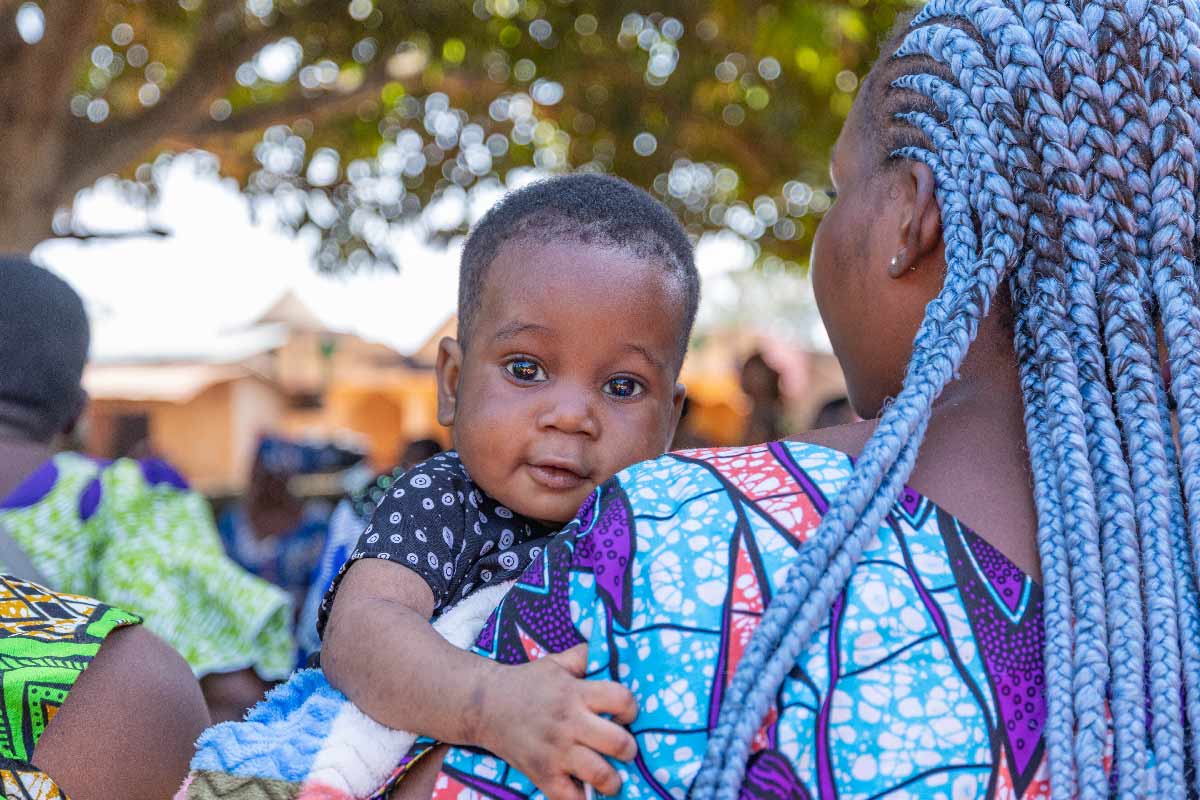Eight things you need to know about the state of global immunisation
The latest WHO and UNICEF immunisation estimates suggest that vaccine coverage is recovering after the pandemic hit health systems hard across the world, yet challenges remain.
- 18 July 2023
- 6 min read
- by Gavi Staff
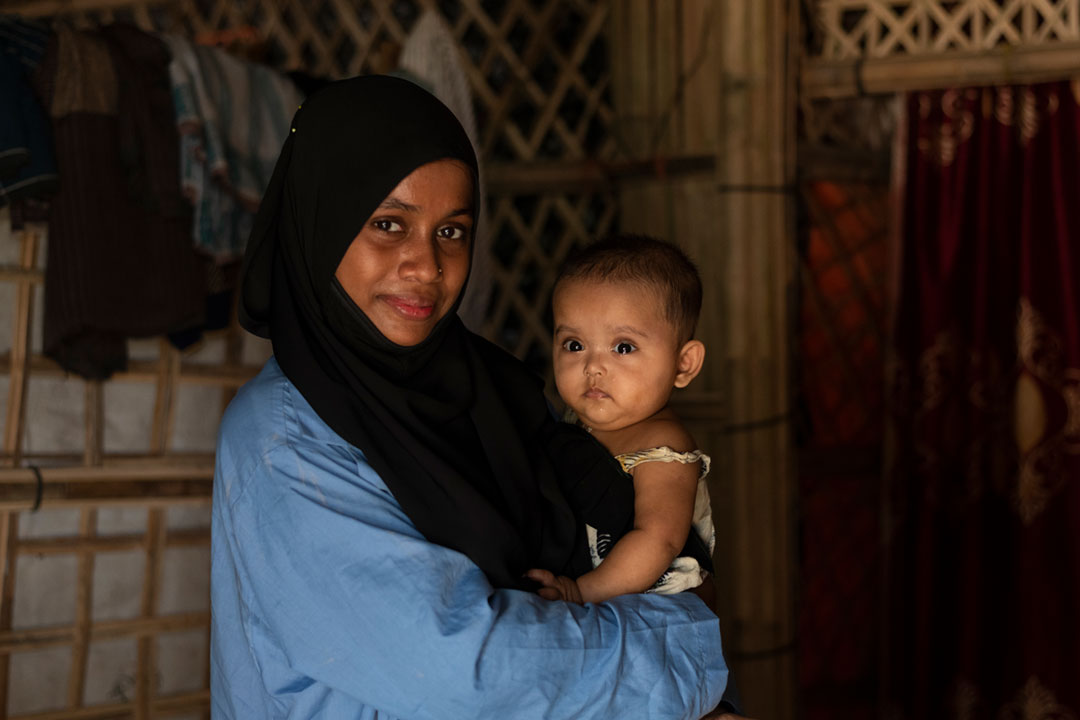
The annual WHO/UNICEF Estimates of National Immunisation Coverage (WUENIC) provide an important window on how many children globally are receiving lifesaving vaccines, and where immunisation efforts are faltering.
According to the latest data received up to 23 June 2023, vaccination coverage across 185 WHO and UNICEF member states has made a strong recovery after the disruption of the pandemic, with the number of children receiving no vaccine doses falling by record amounts. However, the state of global immunisation remains below pre-pandemic levels.
What does this mean for the 57 countries supported by Gavi, the Vaccine Alliance? Here are 8 key take-aways.
1. Vaccine coverage in lower-income countries has nearly recovered to 2019 levels
Basic vaccine coverage, as measured by coverage of three doses of diphtheria, tetanus and pertussis-containing vaccine (DTP3)
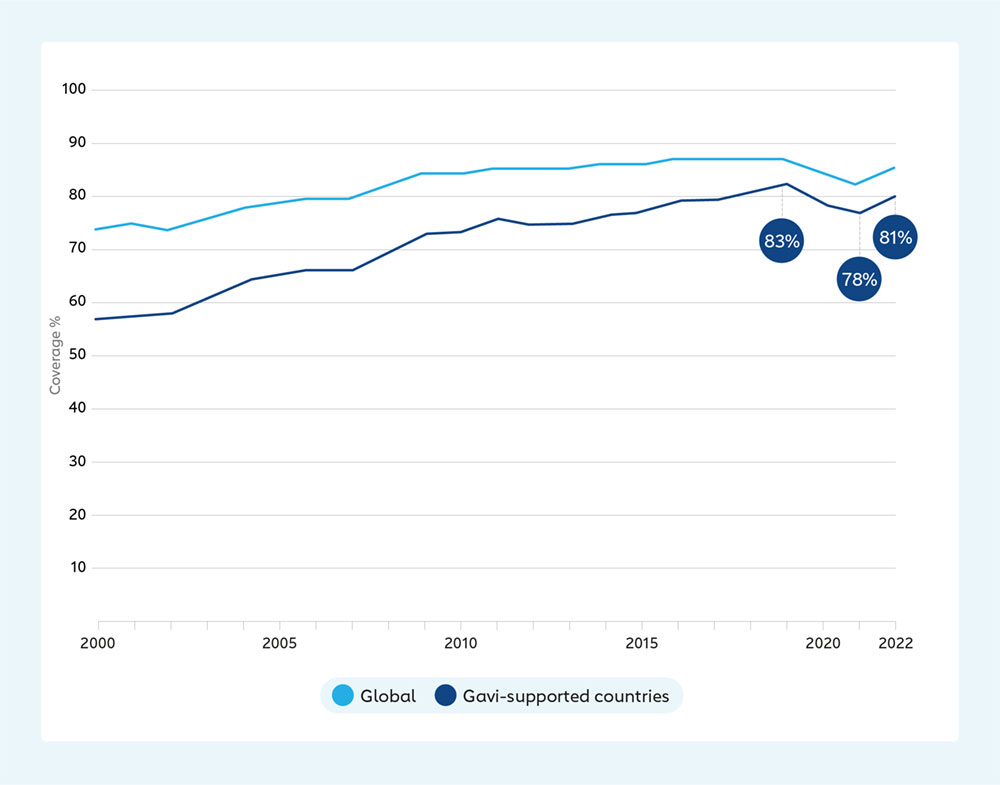
The COVID-19 pandemic strained health systems everywhere, resulting in the largest sustained decline in childhood vaccinations in approximately 30 years. 2022 was the year when vaccination programmes began to recover. The 57 lower-income countries supported by Gavi saw coverage with three doses of diphtheria, tetanus and pertussis-containing vaccine (DTP3) – used as the global marker for immunisation coverage – rising by 3 percentage points to 81% in 2022, just 2 percentage points off the 2019 figure. This mirrors progress globally, with the figure for worldwide immunisation coverage rising by 3 percentage points to 84%.
2. The number of children receiving no vaccine doses has fallen by record amounts
Number of zero-dose children worldwide
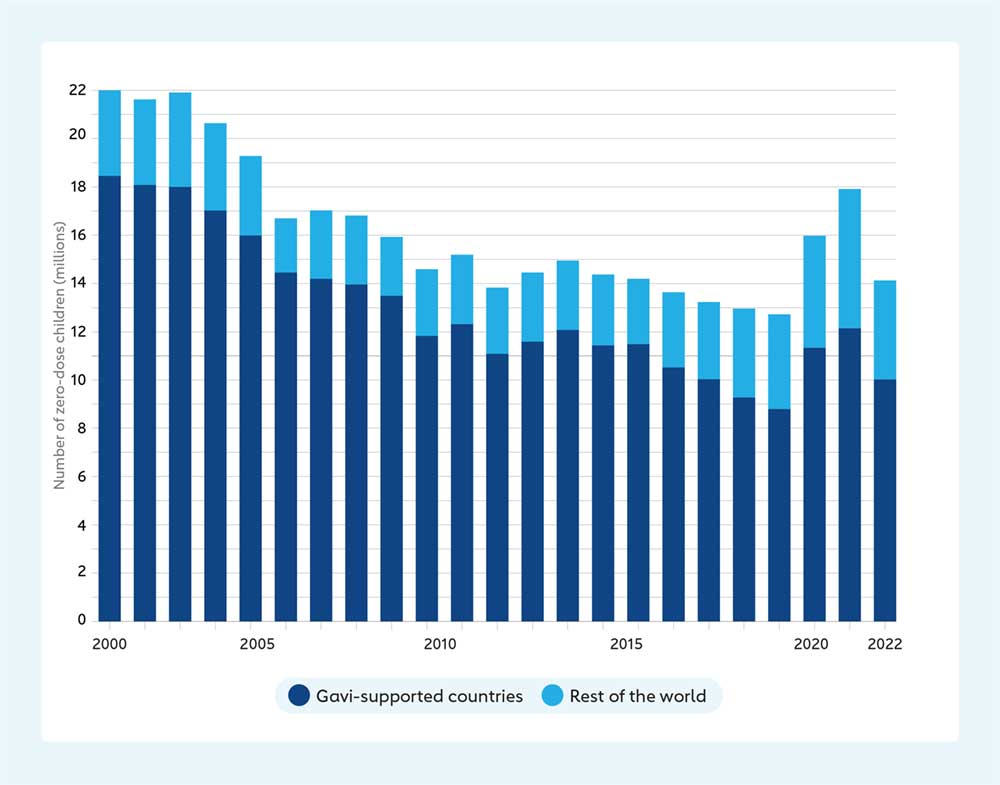
In Gavi-supported lower-income countries, the number of zero-dose children - those receiving no doses of basic vaccines - has fallen from 12.4 million to 10.2 million, but this is still higher than the 9 million reported in 2019. Globally, the number has fallen from 18.1 million to 14.3 million – the largest drop since 2000 – however this again remains higher than the 2019 figure. Progress has also been uneven, with the South-East Asia region reporting 2.5 million fewer zero dose children in 2022, largely due to progress in India and Indonesia. Meanwhile, the African region experienced a 135,000 increase in zero-dose children. Nigeria now has the most zero-dose children globally (2.3 million, accounting for 16% of the global total).
3. Not every country is improving
Basic vaccine (DTP3) coverage by income group
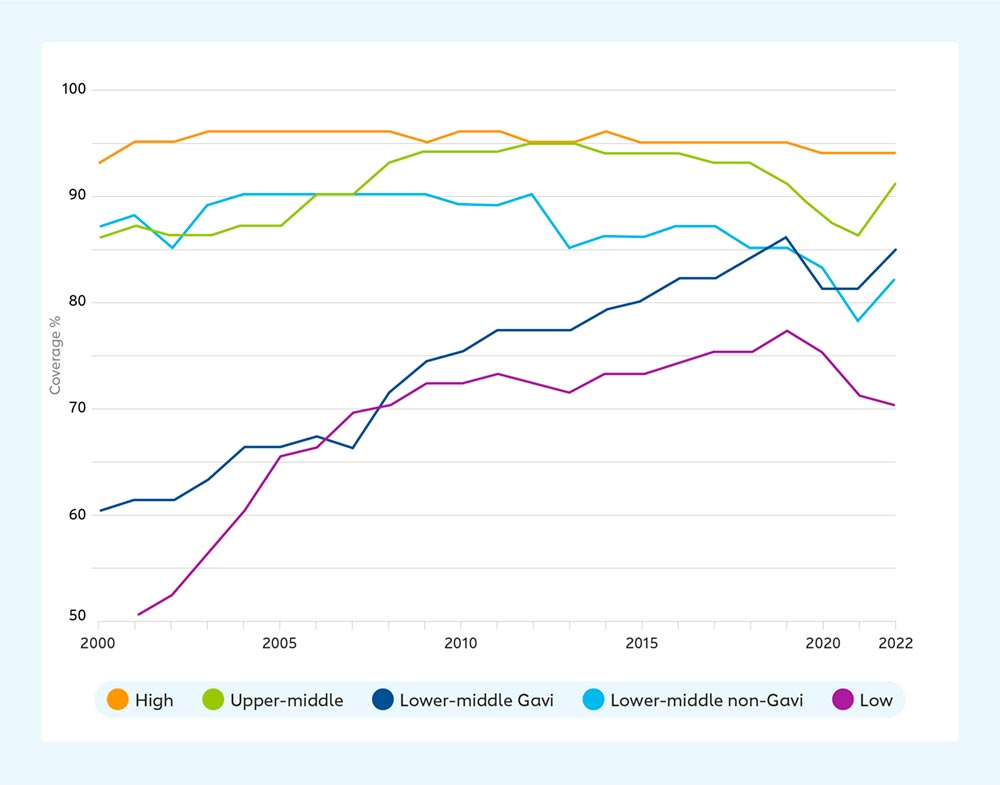
Across the 57 Gavi-supported countries, disparities are emerging between larger, relatively wealthier, middle-income countries - such as India and Pakistan - and less well-resourced low-income countries. In 2022 low-income countries trailed further behind the vaccine coverage levels achieved in 2019, flatlining this year in terms of progress (in fact, the statistics reflect a 1 percentage point drop due to the Democratic People's Republic of Korea's reduction in coverage from 41% to 0%). Countries and partners must accelerate efforts to restore immunisation, build trust and demand for vaccines, and strengthen health systems.
4. Are measles outbreaks "the canary in the coal mine"?
Large and disruptive measles outbreaks worldwide
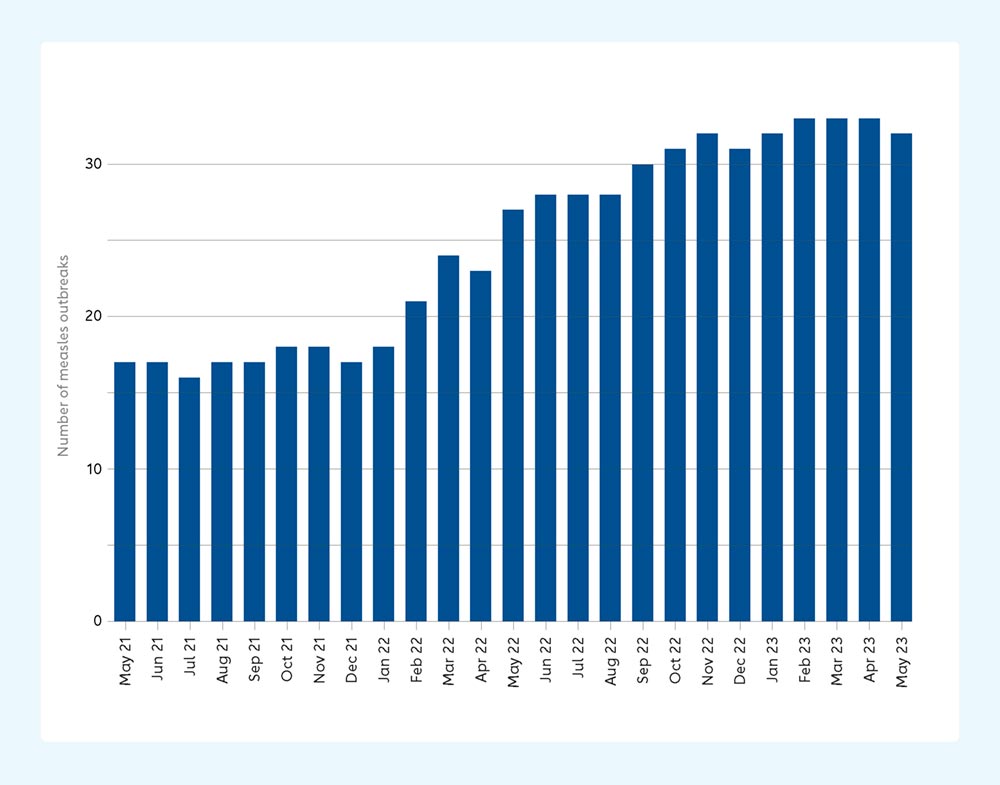
As with most vaccines, coverage of measles-containing vaccines declined during the pandemic and is now recovering close to pre-pandemic levels. The fact that it is among the most contagious diseases means it could be a "canary in the coalmine": the first sign that the world is about to experience a rise in deadly outbreaks. As the graph shows, we are now seeing the secondary consequences of the pandemic: the number of large and disruptive outbreaks of measles has doubled over the past two years. 95% coverage of two doses of measles-containing vaccine is needed to eliminate the risk of outbreaks; most countries are still a long way from achieving that target.
5. HPV vaccine coverage continues to increase in lower-income countries
Human papillomavirus (HPV) vaccine coverage (females)
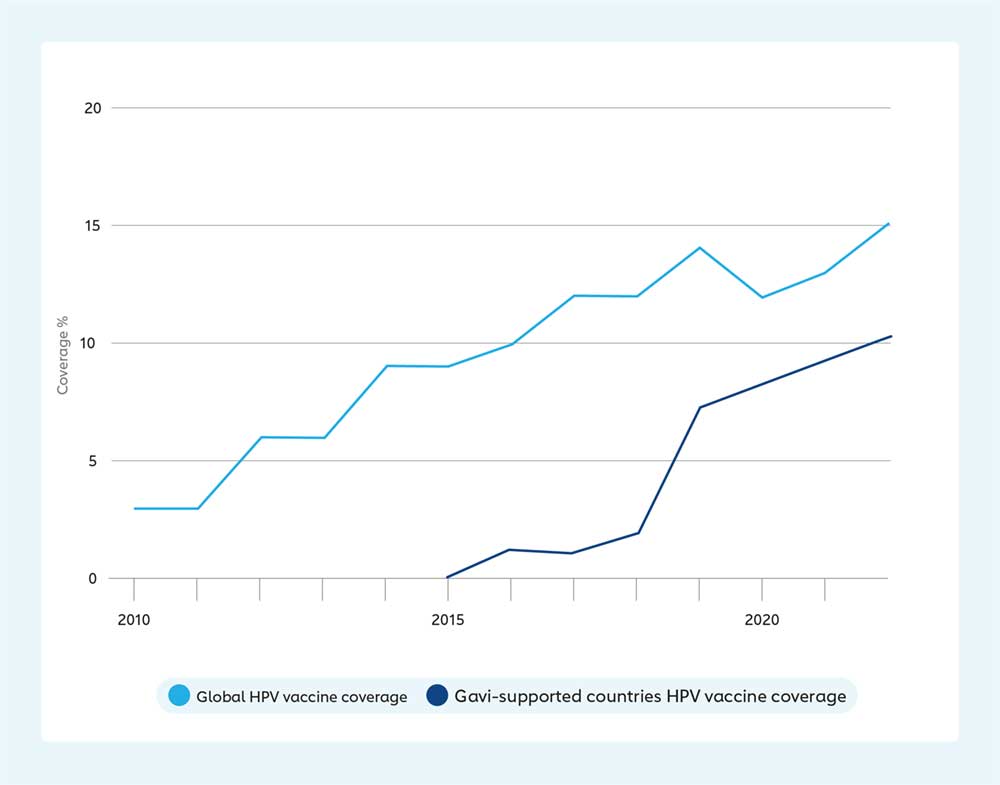
In 2019, the proportion of adolescent girls receiving both doses of human papillomavirus (HPV) vaccine, which protects against the leading causes of cervical cancer, stood at 7% in lower-income countries, increasing to 10% in 2022. This has been driven by new countries introducing the vaccine into their national immunisation programmes, with five additional Gavi-supported countries introducing HPV vaccine last year. With efforts underway to strengthen programme delivery and facilitate more introductions, coverage is expected to further increase in the coming years.
6. The children who do receive vaccines are now protected against more diseases than ever before
Coverage of a full course of vaccines against key preventable diseases in Gavi-supported countries
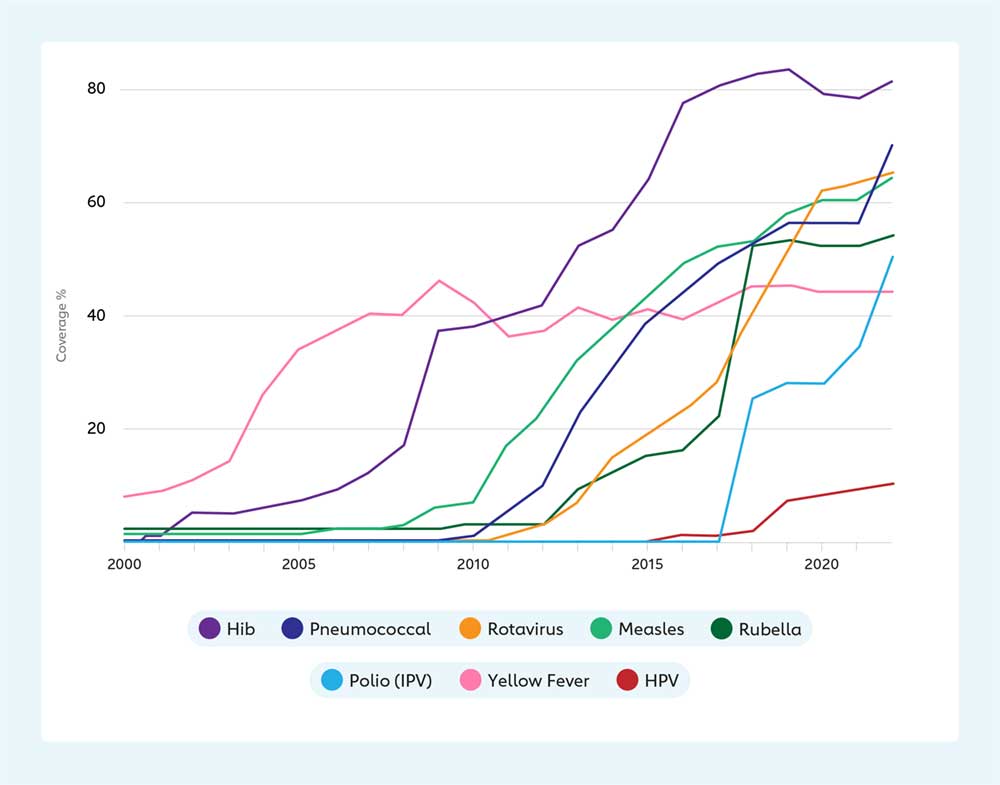
One important metric guiding Gavi's work is 'breadth of protection', which averages coverage of a full course of vaccines against ten preventable diseases: Haemophilus influenzae type B (Hib), HPV, polio (through the IPV vaccine); Japanese encephalitis (JE); measles; meningitis A; pneumococcal disease; rubella; rotavirus; and yellow fever. In Gavi-supported lower-income countries average coverage with vaccines against these infections increased by 5 percentage points last year to 56% - a record high. The introduction of new vaccines, such as the hexavalent vaccine which combines antigens from six of these pathogens into a single vaccine, will further reduce the number of vaccinations needed to achieve this broad protection and reduce delivery costs, further improving health.
7. Former Gavi-eligible countries saw a major bounceback in coverage in 2022
Basic vaccine (DTP3) coverage in Gavi- and former Gavi-eligible countries
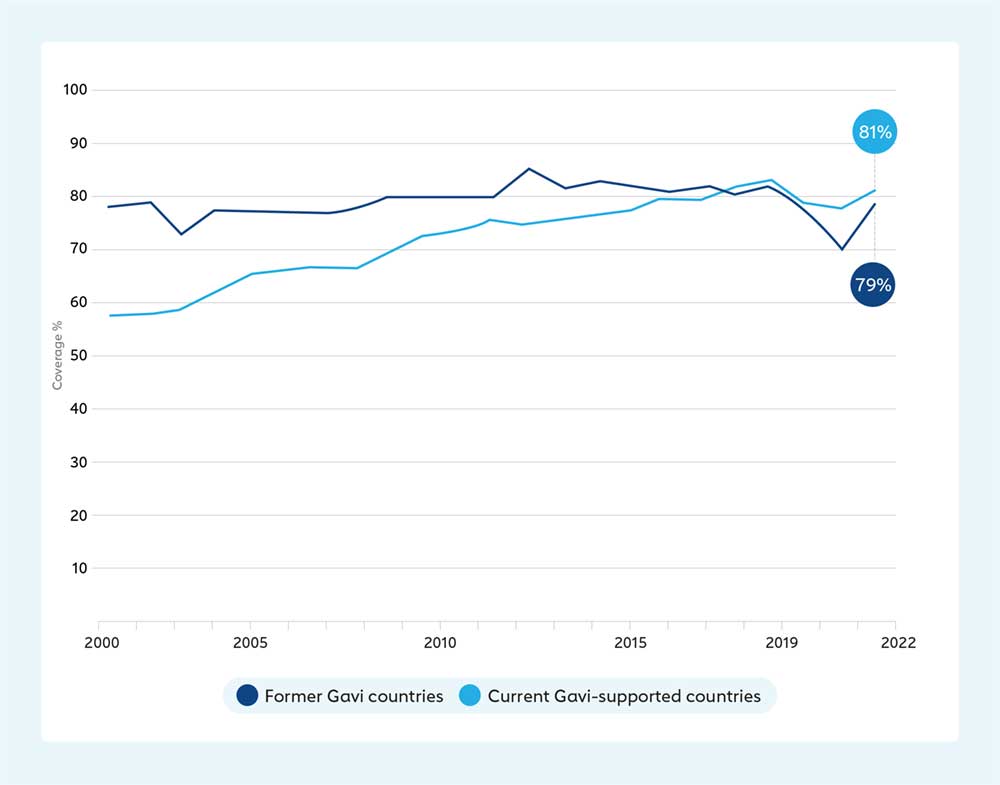
Gavi, the Vaccine Alliance supports countries to buy vaccines and to strengthen the health and immunisation systems needed to deliver them. As countries become wealthier, they gradually become fully self-financing, moving away from Gavi support as they become wealthy enough to finance their own vaccines, though they are still able to purchase certain vaccines cost-effectively by taking advantage of Gavi's buying power. Vaccination programmes in former Gavi countries were hit harder by the pandemic, with coverage dropping well below current Gavi-supported countries, but saw a major 9 percentage point recovery in 2022.
8. Global figures, country-specific challenges
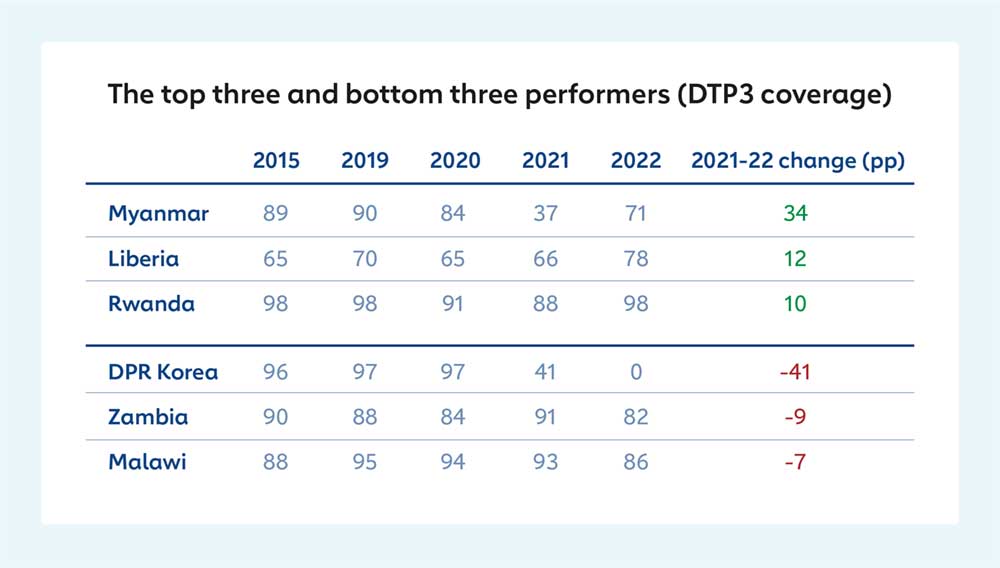
As with every year, the global figures mask significant disparities between and even within countries. Of the 57 Gavi-supported countries, Myanmar, Liberia and Rwanda all saw double digit increases in basic vaccine coverage in 2022. Zambia and Malawi, however, both saw dramatic decreases, while the Democratic People's Republic of Korea dropped to 0% coverage.
Gavi and its partners continue to work with countries to strengthen health systems and increase equitable access to vaccines. Yet there are other challenges, such as ongoing constraints on the supply of rotavirus vaccine (which had a particular impact in Kenya in 2022) and other vaccines, as well as rising vaccine hesitancy across the world. Surging conflict and fragility worldwide also present challenges to health systems: despite a 2 percentage point increase in these countries in 2022, four of the seven countries with the lowest basic vaccine coverage worldwide are segmented by Gavi as fragile & conflict countries.
More from Gavi Staff
Recommended for you





